Check out my multimodal project here!
Thanks for reading and hope you enjoyed my blogs!



Check out my multimodal project here!
Thanks for reading and hope you enjoyed my blogs!



Last Updates!
Now that I have finished my multimodal project, it’s time to look back and reflect! Last time, I discussed making a drawing and possibly filming the process, showing you a sneak peek at the drawing itself. Here’s a reminder.
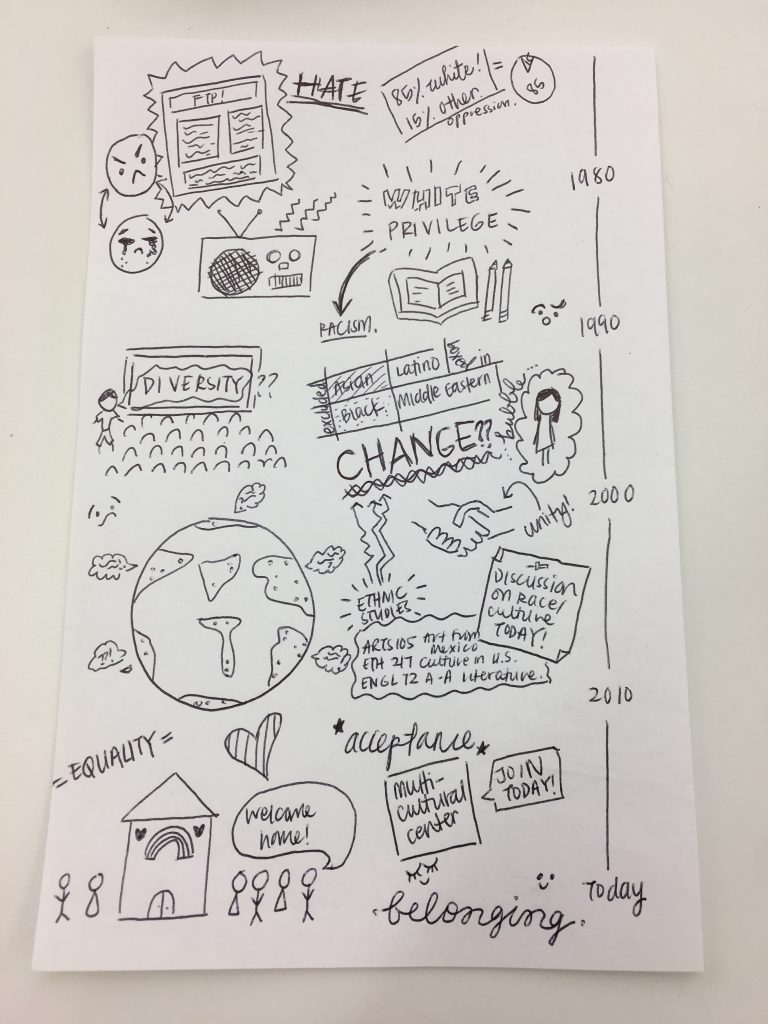
Since then, I’ve enhanced this simple drawing by adding bright colors, more small drawings, and turning it all into a short video. This sounds easy, but it was anything but. I ran in to MANY technical problems with lighting, angling of camera, capturing video, glitchy phones, splitting up videos, transferring them, and finally editing. Overall, it took about 2 hours to create this minute and a half clip. So worth it right?

The final video turned out great and I have little regrets, but there are a few key things I learned.
Ultimately, this last CTW assignment gave me a little freedom to be creative and innovative in presenting the same, old information in a fun, new way.
Thanks for reading!
This is How Far We’ve Come
Finishing up the second section of Critical Thinking and Writing, I realized we’ve come very, very far in writing, reading, research, and English in general. Yet, the most impactful and interesting things I’ve learned has been related to research, specifically the methods and ways to conduct it efficiently. (Yes, I know we’ve gone over this a lot but it’s the last time. I promise!)

Inquiry-Based Research
One of my favorite concepts to rely on when it comes to researching is having a question and inquiry in mind when diving in. By doing this, it not only provides a good sense of direction but also what to look and not look for in terms of sources. For example, this method helped me significantly when I made trips to the Santa Clara University Archives, a place exploding with key material and valuable documents.

In the archives, I found it extremely challenging to sort and arrange all the potential documents for my research papers. However, this inquiry-based mindset I acquired allowed me to have a clearer sense of what sources would be key to my argument as well as those that could be used as naysayers, taking my paper to the next level. I realized that this method was more useful for working with large databases and groups of material rather than a smaller set of information. Overall, I found this tool extremely useful and hope to use it again soon!
Thanks for reading!
Wait, What’s “Multimodal”?
The definition of multimodal is “characterized by several different modes of activity or occurrence”. So what does that mean exactly? It means something that has multiple components that come together to create a great outcome.
My Multimodal Magic
For my Critical Thinking and Writing class, I have been tasked with transforming my final research paper into a multimodal project for my intended audience. Since I’ve been talking about diversity (for basically the entire quarter), I chose to direct my project to fellow students and faculty here at Santa Clara University. For the actual project itself, I’m thinking of creating a collage-style image but making it hand drawn to add a personal touch. So where does this look like exactly? Well, here’s a little snippet.

Besides this, I want to make it into either a video similar to whiteboard videos like this or stop-motion style videos like this. I want to incorporate small images and phrases to make my point really shine through to the audience. Also, the timeline on the side would provide clarification and some direction to where this is all headed. Overall, I’m excited to finally get creative and innovative with all the research I’ve done!

Thanks for reading!
Final (I said FINAL) Research Paper
I promise this is my last blog post on my BIG research paper, but I just wanted to wrap it all up nice and neat.

Writing about racial and cultural diversity on college campuses, I learned a lot about the past efforts and struggles of Santa Clara University students and faculty fighting for minority representation and acceptance. More importantly, I was able to reflect on how this has changed compared to today’s programs and events created for students of color. Not only are the efforts different between the 1980s, 1990s, and now, but the attitudes and behaviors towards diversity and inclusion are also contrasting. In the past, there was a strong trend of negative, destructive attitude towards minority students, harming them as well as their environment. Today, there is a powerful positive, optimistic attitude towards welcoming and accepting students of color as well as educating their student bodies. Overall, the voices of the conversations all had one common theme: diversity is important.
Problems?
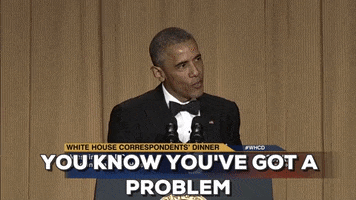
Yes, I faced many problems. Let’s list them out…
Yet through these problems, I was able to learn how to better understand and tie sources in together to make a cohesive voice.
Things I Wish I Could’ve Done
There are so many things I could’ve written on and addressed concerning racial and cultural inclusion. I wish I could’ve expanded this to society and certain communities and cities. I wish I could’ve incorporated how diversity is beneficial to childhood and growing up. I wish I could’ve heard the opinions of more people with more detail than I did. Despite all of these wishes, I am still extremely proud of what I’ve found, analyzed, and learned about diversity in college.

Thanks for reading!
Going to the Library!
Since our professor was not available for our Tuesday class this week, my Critical Thinking and Writing class met up at the library (a.k.a. lieberry to some -_____-) to talk to the great Gail about research!

At the computer lab, Gail conducted some mini activities to help us summarize and consider the context and backgrounds of sources. She gave us links to certain academic journals and documents and asked us to write one-sentence descriptions of them. This included the general topic of the article, its author(s) and credentials, and where it was published. As a class, we then shared what we wrote and whether or not it would be good to include in our annotated bibliographies and papers.
What I Learned
I learned how easy it can be to find a wide range of information simply by looking at the resources available and searching a few things up. Looking at the periodical, I was able to find out some background of the article as well as the journal itself. Searching up the names of the authors, I discovered where they taught, what degrees they have, and what they specialize in. These seemingly small but essential facts can help me create my annotated bibliography and my final research paper. And it was all possible by simply looking!
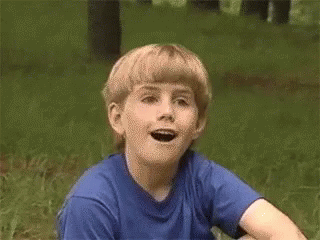
Thanks for reading!
Back to Where It Began
This week I headed back to where it all began: the Archives.

Trying to finish my annotated bibliography, I needed sources on diversity and inclusion at Santa Clara University from the 1980s and 1990s. I picked up from where I left off in Week 3, stepping into Chicano Studies and the Student Involvement Center. In the Chicano Studies box, I found sources written by the lovely Inez Gomez as well as student organizations like M.E.Ch.A-El Frente. In the box for Student Involvement, I discovered more information on the Multicultural Center and the aftermath of the 1985 UNITY movement.
Documents and Differences
Unlike my last trip to the archives, I searched in different areas of studies with the help of Sheila Conway (check her out!), the head of the SCU Archives. She pulled information from the Vice Provost of Student Life and Student Resource Center that had some new information on diversity and inclusion on campus in the 80s and 90s. For example, I examined a documented called “A Weekend on the EDGE” with EDGE standing for “Empowerment, Diversity, Growth, Excellence”. This was a program weekend institute for diversity awareness training and leadership development specifically made for faculty. In the packet included the itinerary and activities meant to educate the SCU staff on what diversity meant and how to go about it. Finding sources like this made me, once again, excited and invigorated about my research, knowing that useful and interesting information found its way to me.

Sum It Up!
I know this blog post is quite short, but that’s because I’m saving all the juicy goodness for the main course: my final research paper. Consisting of 7-8 pages of fun-packed information, I promise it’ll be worth reading because you’ll not only learn more about SCU but about diversity and maybe even yourself.
Thanks for reading!
Welcome Back, Friends!
This week we’re back to talking about research, but with a twist. Instead of talking about the incredibly fascinating stuff I’ve found, I’ve decided to take a step back and consider how my sources piece together in the greater puzzle of my research.

Wait, So What’s With the Title?
As always, subtitle, you have great questions. The title has to do with what territory or what space the research goes into. On the other hand, the gap refers to the holes left from researching that leave questions or a lack of information.
For example, the materials I have found from the Santa Clara University Archives deal more with diversity within the 1980s and 1990s, specifically with the Chicano Studies Department and the UNITY movement and the Multicultural Center. Sources on the Chicano Studies Office show how the administration of the university has dedication and motivation to forward minority student development academically, professionally, socially, and personally. With letters from the Director Inez Gomez, the detailed plans and reports on the status of the Chicano Student Resources, particularly on their improvement as well as points to work on. Regarding the Office of Student Life, the UNITY proposal sets the groundwork for the importance of representing and embracing minorities on campus as well as the establishment of the Multicultural Center. Yet, all of these acts become extremely controversial on campus, leading various groups to publish newsletters and works in response to them. Overall, the voices of the university administration and the students 20-30 years ago are heard clearly in these sources, as if they were just spoken.
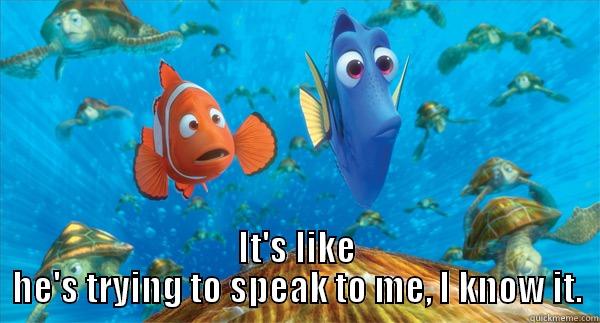
As far as the gap, I found that they were ABUNDANT in archival research. Since the documents are arranged in a particular order, it does not always make chronological sense. Sometimes the packets are even stapled in the wrong order! This creates confusion and frustration in not being able to find the correct or relevant information. Besides this, gaps in my understanding of certain positions, programs, and movements developed as I dove deeper into the rabbit hole of archival research. For example, the results of the UNITY movement became unclear once I looked more at the sources filed with the packet. Finding strange emails and notes, I could not figure out the exact result of UNITY, looking at pieces that referred to the results instead of stating them.
Territory + Gap = ???
Overall, thinking about the territory and gaps of my archival research allowed me to not only see the problems with my style and researching itself but also showed me what to focus more on to collect an abundant, useful group of sources. Territory revealed where I currently am in comparison to where I need or should be. Gaps reinforced the idea that research, especially archival, is not always complete or even easy and that we need to create meaningful connections between the sources as we continue the search for answers.

Thanks for reading!
Now to Our Regularly Scheduled Program…
For this week’s blog, I was given the topic of comparing and contrasting my method of researching to that of author and professor Margaret Kantz. Getting a break from researching is actually the opposite of what I wanted to focus on since I feel as if it’s just gotten good. Yet, let’s indulge ourselves with a bit of reading on how to write on research.

Kantz and Konversation
Kantz begins her article with the idea that, “Although the researched essay as a topic has been much written about, it has been little studied” (Kantz). Obviously, she hasn’t read all the sources about research that I have (but that’s besides the point). Delving into her study, she creates a hypothetical student named Shirley based on the average and standard behaviors of students when it comes to researching. Kantz comes to the three conclusions: “1) Many students like Shirley misunderstand sources because they read them as stories. 2) Many students expect their sources to tell the truth; hence, they equate persuasive writing in this context with making things up. 3) Many students do not understand that facts are a kind of claim and are often used persuasively in so-called object writing to create an impression” (Kantz). Unlike the other articles I’ve read, Kantz has a slightly different observation of what students have been doing incorrectly in researching.
Personally, I did not run into the same issues that Shirley encountered. Looking at different sources online and in the archives, I took the materials to be factual and representations of thoughts and opinions of their time. Yet, I had a difficult time grasping the second and third assumption Kantz make. To me, I saw the persuasion aspect of an article, or even my own writing, as a unique angle adopted by the writer. However, it is important to be able to recognize this and the importance of it.
Kantz’ Fixez
Providing solutions to her observations, Kantz analyzes the actions and difficulties of researching through several methods. For example, she uses a triangular diagram created by Kinneavy. Giving it a new spin, she renames the parts as the following: “the Encoder is the writer of the text, the Decoder is the student reader, and Reality is the subject matter. Readers may consider only one point of the triangle at a time, asking such questions as ‘Who are you?’…Other questions would involve all three points of the triangle, e.g., ‘What are you saying to help me with the porblem you assume I have?'”(Kantz). With these questions, Kantz calls on students to thoroughly examine sources and analyze them with a grain of salt. In addition, these heuristic questions are meant to aid the writing process.

Drawing on my personal experiences, I find that the triangular method is something that I do subconsciously when analyzing materials for research. Yet for those who struggle with understanding sources this process can be very useful. Overall, I did not necessarily agree with or experience many of the phenomenons that Kantz was discussing. Frankly, I’m a little tired of reading about research, but that’s just my opinion.
Thanks for reading!
Back to the Bases (get it? it’s like basics)
It’s Week 6 and it’s time to dive into the Big Bertha of research assignments! To do this, I used the information learned from the lovely librarian Gail who instructed my Critical Thinking and Writing class as well as my Asian Americans and Popular Culture class, which I took last quarter. Finding the OmniFile link, I immediately typed in “(diversit*) AND (college OR university) AND (race* OR ethnicit*)” in to the given search bars. Happening almost instantaneously, I received roughly 3,000 results from just a few words. It was like magic.
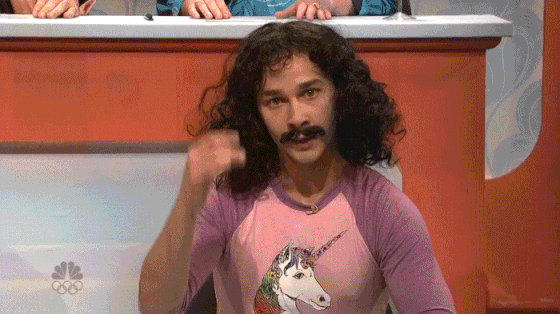
What Did You Find, Celine?
Thanks for asking, subtitle. I found an academic journal called, “Precollege Exposure to Racial/Ethnic Difference and First-Year College Students’ Racial Attitudes” written by Nicholas A. Bowman and Stewart Dafina-Lazarus discussing how the racial backgrounds of students and their past exposure to different racial groups translate into the next stage of their lives: college. Specifically, the authors sought to recognize how impactful interracial and racially homogeneous friendships and experiences that occur in high school are in forming attitudes towards diversity in college and beyond. Interesting, the article also failed to have a bias towards any particular racial group, drawing assumptions and suggestions based on its survey of 4,000 students from 28 various universities.
But, What Were You Looking For? Well…
After experiencing how difficult online database searches can be last quarter, I went into this initial search with optimism and without a goal in mind, simply browsing around. I was lucky enough to have a more controversial and interesting topic this time (compared to boba). Even though I was not looking for anything particular, this first source actually connects well to the research I’ve conducted in the past via the SCU archives and online surveys. For example, it relates to how I distributed my survey to first-years exclusively. I did not intend to limit my responses in this way, but it ended up being an advantage since they could draw upon their recent high school experiences to answer the questions.
The tutorial we read did not particularly address any issues I encountered, yet I have knowledge about the type of problems that online databases cause given my past experiences. Fortunately for us, we had to amazing Gail to guide us with how to find the best sources in the most effective way, allowing me to find this gem of an article.

Thanks for reading!
P.S. Hope you love the magical references 😉